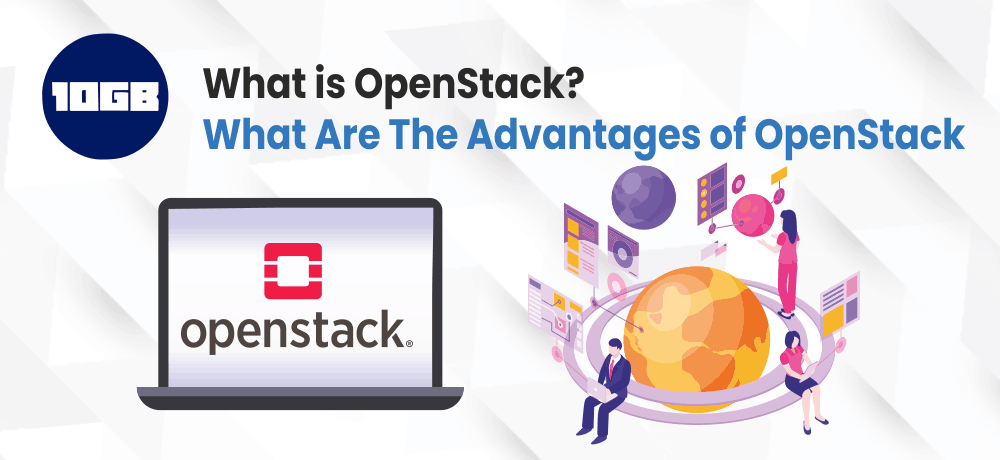Regardless of the experience, you have with the cloud, you possibly might have heard about OpenStack but have you ever thought What is OpenStack?
Then, you are in the right place as in this article, we will be discussing what is OpenStack, how it works, and later we will have a look at the advantages of OpenStack.
Before going into our main discussion, let’s first understand what a software stack is?
A software stack is a system of software built to run on a server and assist or support a website or an application. Usually, the stack comprises an operating system (OS), database, web server, and a programming language.
Now let’s see what is OpenStack?
Table of Contents
What is OpenStack?
OpenStack technology is a free, open-source cloud platform that controls and manages huge pools of computing, storage, and networking resources all over the data center. All of this is managed and provisioned via APIs (Application Programming Interfaces) with common authentication mechanisms.
Maximum of the cloud platforms operate on a cluster of physical servers placed in a data center. These servers consist of either one or more than one hypervisors that create and maintain virtual machines. By using hypervisors and virtualization, among other tools, it is feasible to extract the resources of the servers for distribution as required.
The OpenStack technology with the use of API partitions the RAM, CPU and storage to create a pooled virtual resources for running private and public clouds.
The end users and server administrators interact directly with the tools that are accessible via the stack to leverage robust cloud environment.
Now as we have discussed what is OpenStack?, let’s move ahead to see working of OpenStack.
Working of OpenStack
OpenStack is utilized to manage the pools of computing, storage, and networking resources. The tools that compose an OpenStack platform are known as projects. These projects are used either individually or collectively by the users and administrators to build their cloud environments.
According to Red Hat, the projects or tools in the OpenStack suffice the National Institute of Standards and Technology’s five criteria of cloud computing. The five criteria of loud computing are network, a user interface, pooled resources, provisioning capabilities, and automatic resource control/allocation.
OpenStack relies on both an operating system and virtualizer to complete its task.
By using hypervisors a robust cloud environment can be built. The hypervisor is connected directly to the hardware to segregate a single system into multiple systems. Each of these separate, distinct, secure environments are known as virtual machines or VMs.
Through the method of virtualization, physical resources get pooled and reallocated for usage. OpenStack technology enables the control and management of virtual instances of CPU, memory, storage, and other resources so end-users obtain what they require for their environments.
Suggested For Further Reading:
- Cloud Computing vs Virtualization: Things We Need to Know
- What is Hybrid Cloud? and Benefits of Hybrid Cloud
What Are The Advantages of Open Stack?
Several web hosting providers are migrating to cloud computing architecture.
Below are four advantages of using OpenStack:
OpenStack is Open Source
Free and open-source software offers the chance to host with minimal or no licensing cost. Based on the type of OS you run, you can save money over the period.
OpenStack Offers Flexibility
For businesses that are continuously growing and scaling, hosting on a platform that can sync their growth is a big plus. OpenStack has the makings of a platform that enables the implementation of a cloud environment able to fulfill the needs of modern-day businesses.
OpenStack’s Level of Support
OpenStack has development assistance from tech giants like Intel, IBM, AT&T, Cisco, Dell, Red Hat, Ubuntu, and several other players from the tech industry. this signifies that as a company they can enhance and improve faster than the platforms because of the level of support backing them.
OpenStack’s Ease of Deployment
OpenStack easily deploys a load-balanced configuration or a database cluster, this makes it appealing for SMBs. These deployments manage technical burden for the customer while keeping their environment secure, redundant, and performant.
Conclusion
We hope, through this article you have understood what is a OpenStack and what are its benefits.
Moreover, we at 10GB Hosting are happy to help you. In case you have minimal technical knowledge or don’t have enough time to focus on the technical aspects of your business, we suggest you pick our Affordable Managed VPS hosting.
